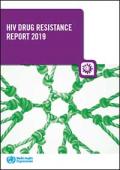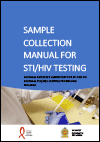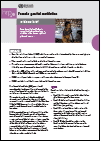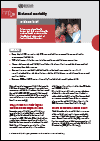What's New
Displaying results 911 - 920 of 4913

Resource | Publications,
Many people who inject and use drugs experience negative interactions with the police and, as a result, are over represented in criminal justice systems, prisons and compulsory drug treatment centres. This happens because in many countries, the production, trafficking and use of some drugs is illegal and police are tasked with enforcing the law. Harm reduction programmes at their core recognize that drug use has implications for individual and public health, and these harms must be reduced as a fundamental step towards ensuring the human right to health. Despite these policy and programmatic shifts, people who use and inject drugs frequently report being targeted and searched by police, as well as experiencing harassment, humiliation, extortion, violence and arbitrary detention at the hands of the police.

Resource | Publications,
World Report 2020 is Human Rights Watch’s 30th annual review of human rights practices around the globe. It summarizes key human rights issues in more than 100 countries and territories worldwide, drawing on events from late 2018 through November 2019.

Resource | Fact Sheets,
In August 2019, there were 1,228 newly confirmed HIV-positive individuals reported to the HIV/AIDS & ART Registry of the Philippines (HARP). This was 17% higher compared with the diagnosed cases (1,047) in the same period last year. Fifteen percent (185) had clinical manifestations of advanced HIV infection (WHO clinical stage 3 or 4) at the time of diagnosis.

Resource | Publications,
The rise in antimicrobial resistance (AMR) is one of the greatest threats to global health. If it is not urgently addressed, it may result in millions of deaths, an increase in new and hard-to-treat infections and increased health-care costs. As a result, combatting AMR, including the threat posed by drug-resistant HIV, is a major goal for the global community.
Prevention, monitoring and timely response to population levels of HIV drug resistance (HIVDR) is critical to achieving the WHO/UNAIDS 90–90–90 targets for 2020 that 90% of people living with HIV know their HIV status, 90% of those who know their HIV-positive status are accessing treatment and 90% of the people receiving treatment having suppressed viral loads.

Resource | Tools,
This training manual was developed by TB-affected communites and TB activists to build and strengthen the capacity of people with and affected by TB to better understand the human rights issues and abuses they encounter and be able to respond constructively. Communities affected by TB include communities of people with TB disease, those who have previously had TB disease, and key populations like children, healthcare workers, indigenous peoples, people living with HIV, people who use drugs, prisoners, miners, mobile populations, women, the urban and rural poor, and their families, and dependents and their caregivers.

Resource | Publications,
The necessity of a manual for sample collection, transport and storage was a long felt need in the STI and HIV field. This manual was prepared to fulfill that need and as an initial step of the journey towards accreditation of laboratories for STI and HIV. Streamlining the quality management systems in laboratory sector is very essential in reaching the goals of elimination of mother to child transmission of Syphilis and HIV and in ending AIDS by 2025. It is expected that this manual to be a corner stone in improving the quality of laboratory testing.

Resource | Publications,
In many societies, girls are under pressure to marry and bear children early. In low- and middle-income countries, over 30% of girls marry before they are 18 years of age; around 14% before the age of 15. Early marriage generally leads to early child bearing, in accordance with social norms.
In many places girls choose to become pregnant because they have limited educational and employment prospects and given that motherhood is valued, marriage/union and child bearing may be the best of the limited options they have.

Resource | Publications,
Family planning has clear health benefits, since the prevention of unintended pregnancies results in a subsequent decrease in maternal morbidity and mortality. Contraception allows spacing of pregnancies, delaying pregnancies in young girls who are at increased risk of health problems from early childbearing, and preventing pregnancies among older women who also face increased risks. Contraception enables women who wish to limit the size of their families to do so. By reducing rates of unintended pregnancies, contraception also reduces the need for unsafe abortion. Contraception is a low-cost and effective way to save lives.

Resource | Publications,
FGM is recognized internationally as a violation of the human rights of girls and women. It reflects deep-rooted inequality between the sexes, and constitutes an extreme form of discrimination against women. It is nearly always carried out on minors and is a violation of the rights of children. The practice also violates a person’s rights to health, security and physical integrity, the right to be free from torture and cruel, inhuman or degrading treatment, and the right to life when the procedure results in death.

Resource | Publications,
Maternal mortality is unacceptably high. Estimates for 2017 show that some 810 women die every day from pregnancy- or childbirth-related complications around the world. In 2017, 295 000 women died during and following pregnancy and childbirth. The vast majority occurred in low-resource settings, and most could have been prevented.





